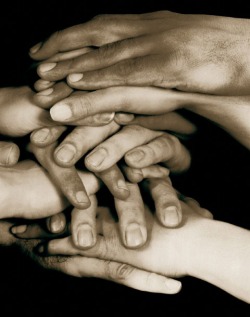|
A priori supposition: once basic survival is guaranteed, the next best thing one can do for someone is help them have a happy life, not fill them with material possessions. Definition: Social Work’s main goal, as a discipline, is to increase an individual’s or group’s quality of life, and bring about social change. If one assumes the above statements correct, then one must conclude that the wealthy in today’s super developed nations are the people who social workers should be focused on. With so many variables contributing to it, defining “quality of life” can be somewhat tricky: with elements ranging from better health care, to better schooling and safer environments. However, once one has surpassed the challenge of finding food, shelter, and basic survival has been guaranteed, one could very confidently argue that one’s psychological well being (happiness) should be the next item addressed in the totem pole of quality of life. I am arguing that the field of Social Work today has its attention and effort wrongly placed. In today’s most developed countries, where, in general, survival of most of its inhabitants has been guaranteed, instead of trying to improve the quality of life of the poor, that is, making the poor better consumers and participants in today’s capitalist society, one should realize that the people that really need help are the very wealthy. Today’s most developed countries have higher indices of psychological problems, ranging from depression to suicide, than any other group of countries in the world; and in these rich countries the wealthy are more affected by these psychological conditions than the poor are. Yet, the field that is supposed to be tackling this problem is completely enamored with the idea of tackling poverty instead! A field that is supposed to be about social change has instead been completely high jacked and transformed into a puppet of Capitalism. As long as Social Work keeps laboring in the duality of poverty versus wealth, it will always be working within the bounds of Capitalism, and might achieve small improvements in the quality of life of its subjects, but never will it achieve any type of social change. If one defines happiness as a sense of love, compassion and understanding that engenders a feeling of being, and connectedness to others, that ultimately makes one’s life meaningful and full of purpose, then one must recognize that the poor are in general a much happier group of people than the very wealthy – who, alone in their very comfortable and big beds, seem to need a handful of medication to be able to enjoy a good night’s sleep. Instead, in today’s society, Happiness is confused with a feeling of achievement and material well being. Social Work today seems to be working hard at making the poor get out of poverty and able to achieve this level of material well being (raising one's standard of living) – some level of economic wealth that could hopefully be translated into political power. However, this focus completely reinforces Capitalism’s grasp on society – the real reason a condition such as poverty still exists in such affluent and rich societies as these. Having material well being as an end goal is flawed from conception because of two other reasons: 1) The Capitalist system is designed such that there can only be a small number of wealthy people: the majority having to be poor, given that if everyone was rich, money would lose its value, and nobody would be rich anymore. And 2) Wealth, or fulfilling the “wants” that have been brainwashed into our heads after years of propaganda and marketing by the big corporations of today’s Capitalist economy, will only bring a very short termed sense of Happiness, because deep down, why do we need that really expensive car, or extra big house anyway? Instead, one should look at the poor communities in today’s very wealthy countries, or at the culture of today’s third world countries, and see why their population, despite being poor, are arguably happier (have a much healthier psychological profile); and thus see what one could learn from them and apply in today’s more economically developed countries. Stay in tune with the blog, for I will soon publish the part 2 of this article suggesting my view on what and how Social Work should focus on in the future, what I am calling Social Work’s “New Frontier” And the role that Design and Designers will have on this.
2 Comments
ParallelCities.com is a Social Augmented reality site. Initially it will focus on mobile social networking (augmented reality portion) but it will have a strong online (desktop) component as well.
The Problem: It is very difficult for new comers to the city (university students, recent graduates, young professionals, immigrants) to break into the city’s social scene, and connect with other people they might find interesting; and that is so because when you are surrounded by millions of strangers, it is hard to know who among them you would be interested in, and even if you did, you would lack a medium to make the interaction take place comfortably. The Solution: Through ParallelCities.com you join and interact with people based on shared interest topic communities and activities. It creates a virtual city to your existing city that you can populate and form more meaningful and functional communities than the ones formed currently by geographical proximity. And through its mobile social augmented reality component, you can interact with other people from your virtual communities while out in the city itself – otherwise complete strangers that in existing conditions you would completely miss. I am currently hiring people that have knowledge of Ruby on Rails, and/or mobile app development to join the founding team, and help launch the website. We are a young, driven and very energetic company with ambitions set very high, and we are looking for people with the same spirit to join the team and help propel it forward! Let me know if you are interested you can email me at "[email protected]" A lot of the work was done in post production in the darkroom, with the blue tone being added as the photo was developing, and exposing the photo paper to certain chemicals to stop the development in certain light rich areas like the eyes for example. The Original was a black and white image.
FILM: T - Max 400 Professional Black & White Negative Film Camera: Nikon N80 |
the WORKSHOP... works IN PROGRESS/the latest/the RANDOM...
Archives
May 2020
Categories
All
|



 RSS Feed
RSS Feed
